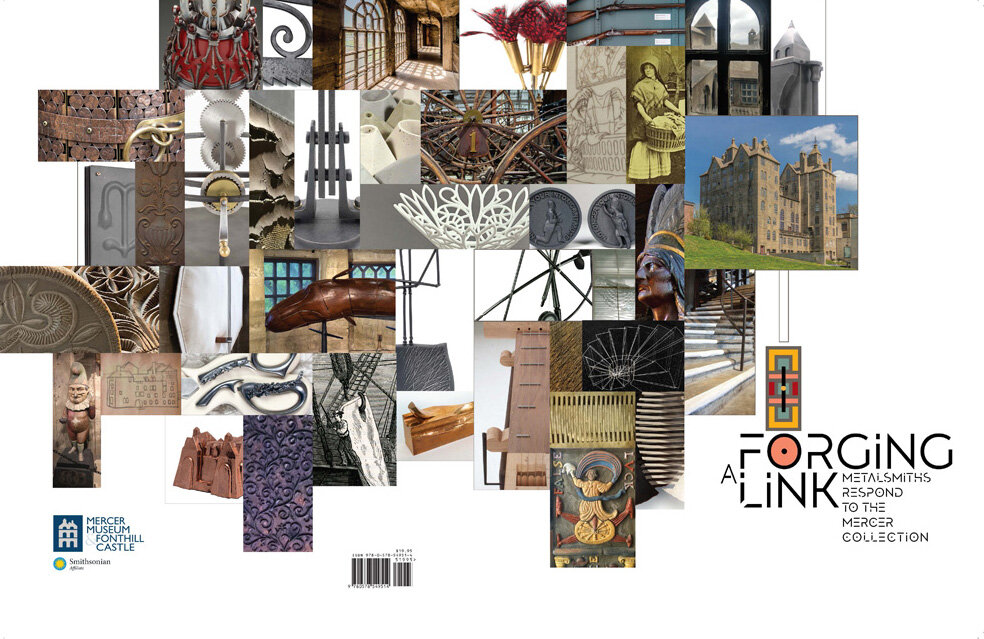
Forging a Link: Metalsmiths Respond to the Mercer Collection was on view at the Mercer Museum in Doylestown, PA September 28, 2019 through January 5, 2020.
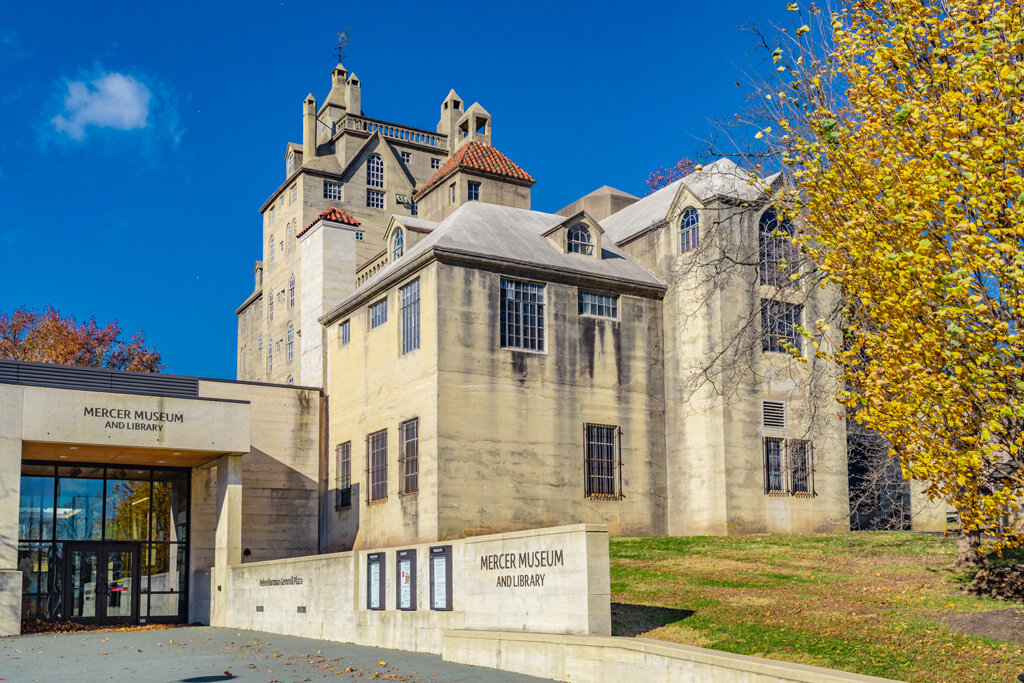
The Mercer Museum.
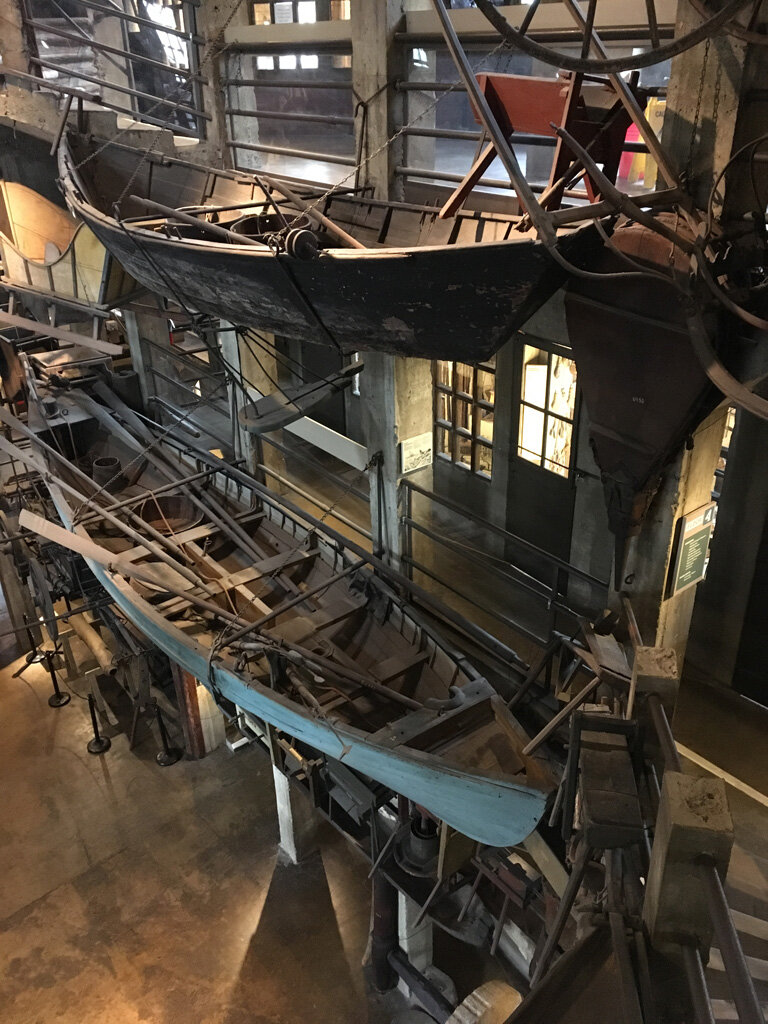
Interior courtyard of the Mercer Museum.

23 Metalsmiths, Jewelers and Blacksmiths were invited to create a piece for the exhibition.

Participating artists met to gather inspiration in October 2018.
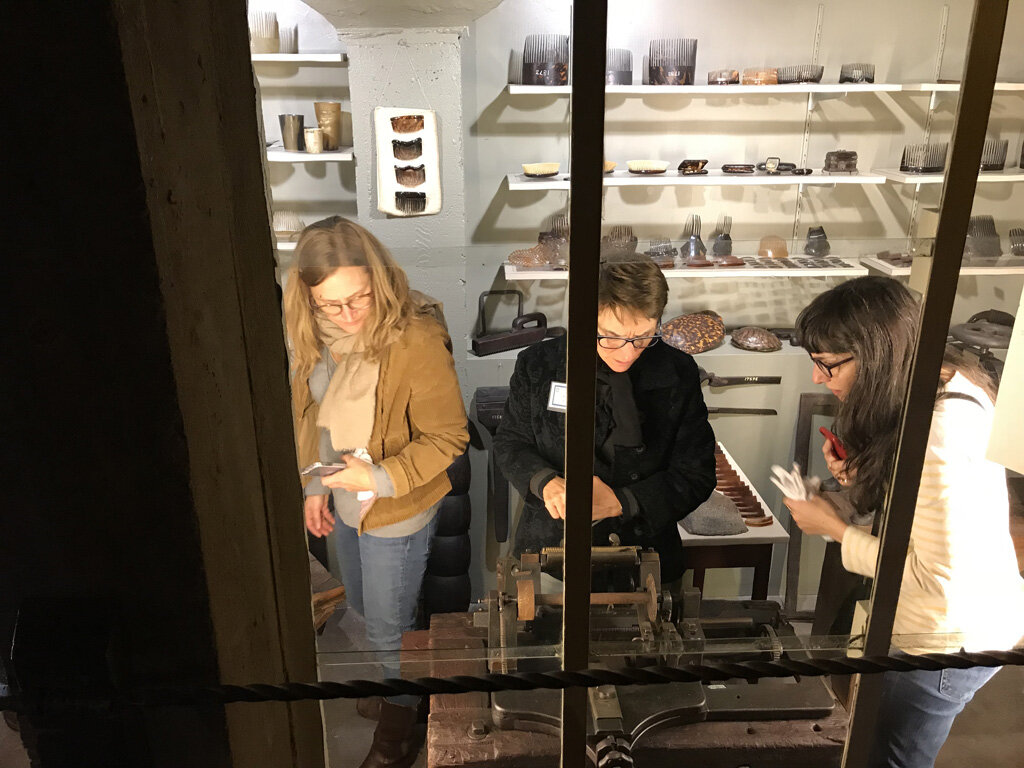
Cappy, Pamela Wallace and Melanie Bilenker in the tortoise shell comb room.

View of the kitchen display.

Works were identified with labels and maps.

Cappy's work displayed in the kitchen.
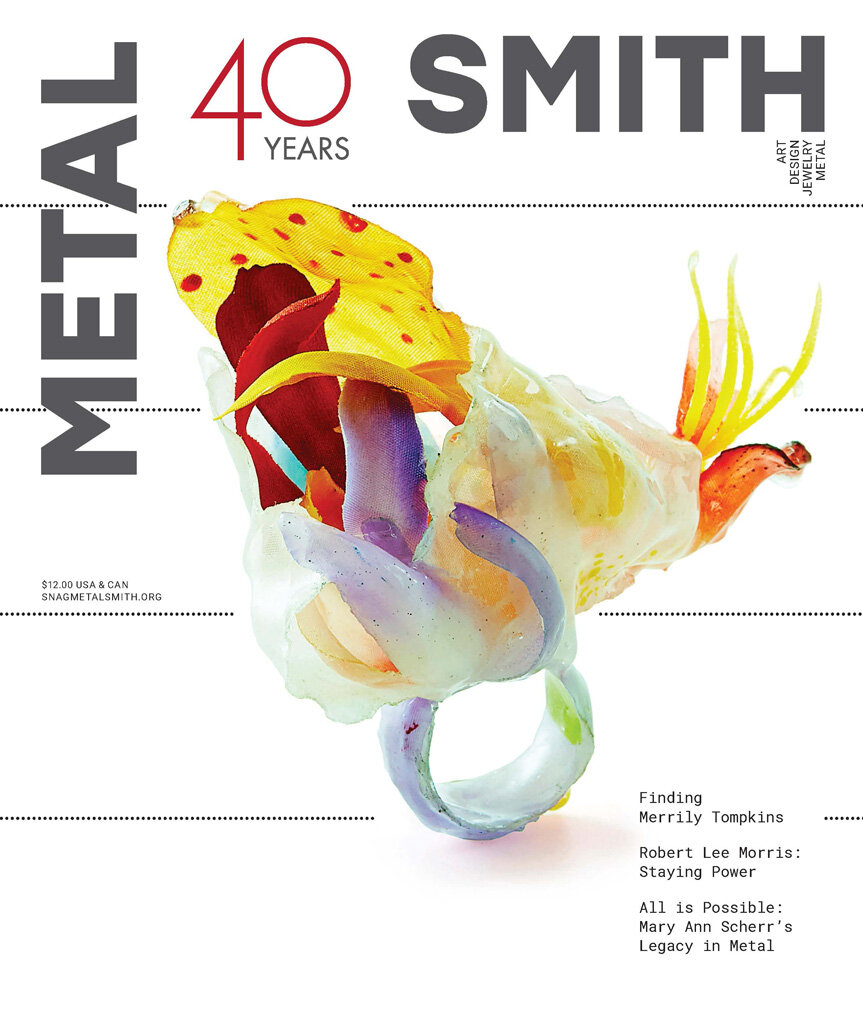
Find the exhibition review in Metalsmith Magazine.
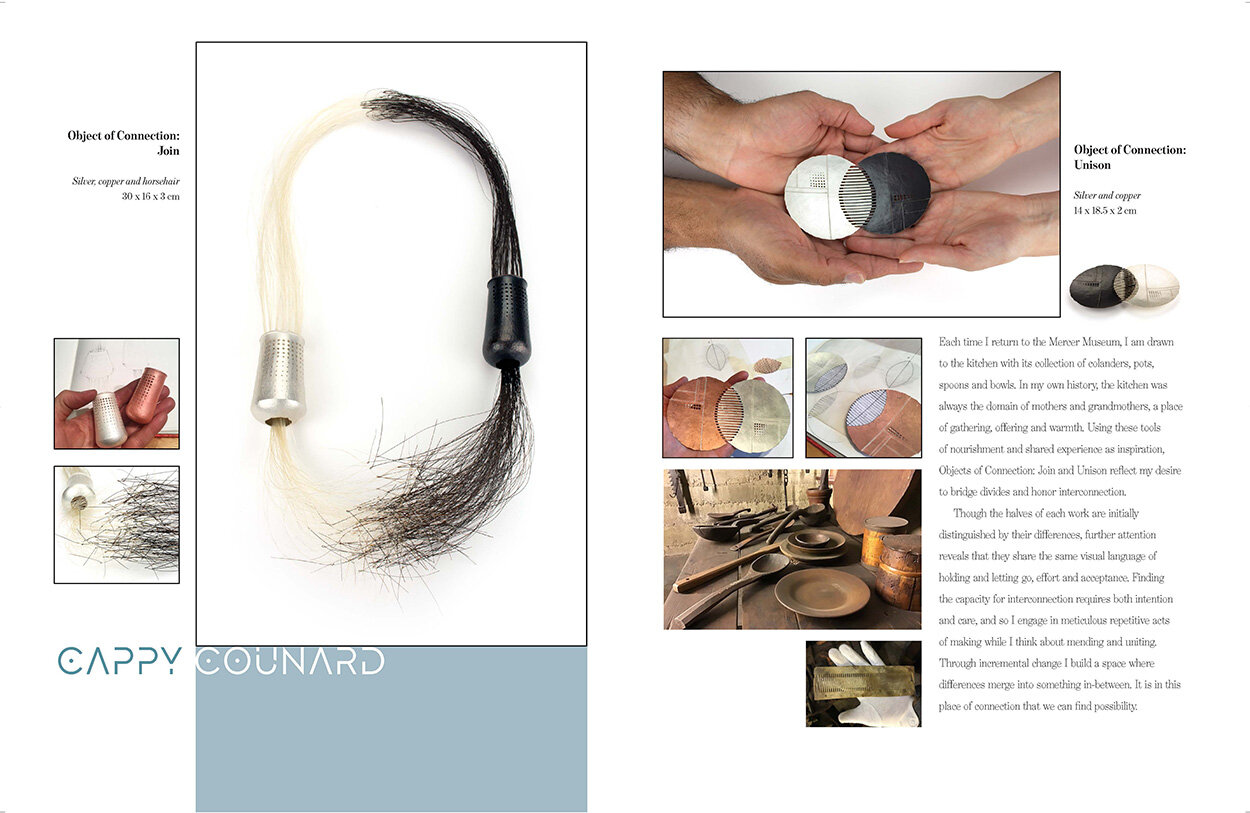
Catalogue design by Shelle Barron.
Forging a LInk: Metalsmiths respond to the MerceR Collection
The Mercer Museum, in Doylestown, PA, is a six-story concrete castle built by Henry Mercer and filled with his intriguing collection of 50,000 pre-industrial tools. https://www.mercermuseum.org Walking into the museum for the first time is awe-inspiring. The architecture soars six stories overhead in the interior courtyard while winding stairs and meandering passageways lead to small exhibit rooms lining the balconies. Every surface holds tools and objects that are marked and worn by constant use. These objects archive the daily rituals of domestic work as well as specialized trades that range from tortoise shell comb making and tinsmithing to fruit preservation and coopering.
The museum, in collaboration with guest curator Cappy Counard, invited twenty-three blacksmiths, metalsmiths, and jewelers to create a piece of artwork directly influenced by their experience with Mercer’s collection and architecture. They demonstrated remarkable vision as they encouraged artists to explore ideas for work and display that were sometimes challenging and often surprising. The metalsmiths’ diverse work sought to disrupt, question, and inject a moment of unexpected wonder into the Mercer experience while asking viewers to contemplate a broader way of thinking through the objects that connect us.
Participating artists were Sue Amendolara, Lynn Batchelder, Erica Bello, Melanie Bilenker, Cappy Counard, Maria Eife, Michael Gayk, Ian Henderson, Warren Holzman, Jera Lodge, Becky McDonah, Tedd McDonah, Myra Mimlitsch-Gray, Dan Neville, Nash Quinn, Patrick J. Quinn, Stephen Reynolds, Mike Rossi, Courtney Starrett, Katja Toporski, Pamela J. Wallace, Stacey Lee Webber and Adam Whitney.
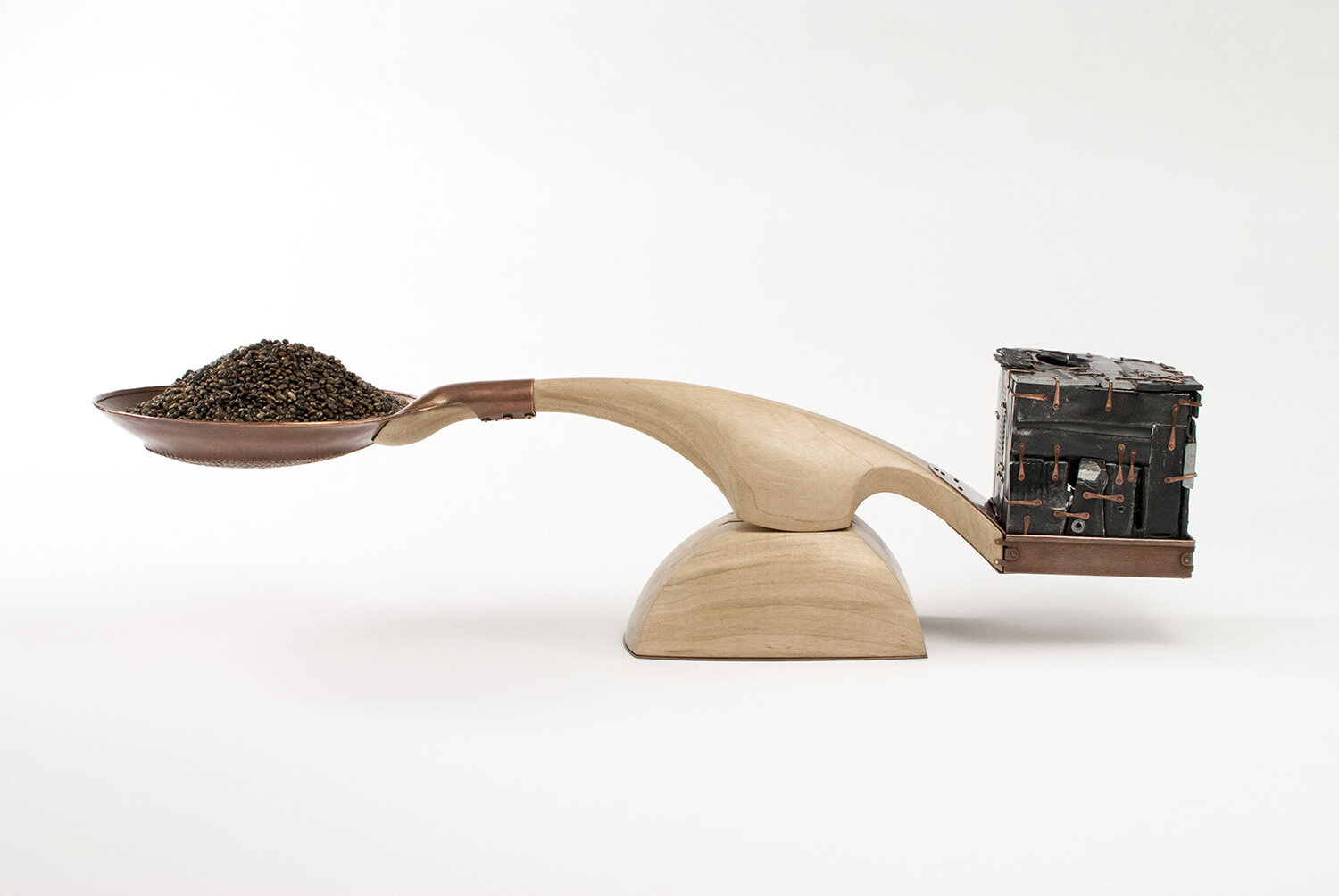
THE HUMAN COST the metal from one handgun, 12,942 wild perennial lupine seeds (one for each person killed with guns in the United States in 2015), copper, maple 5 x 20 x 6 inches

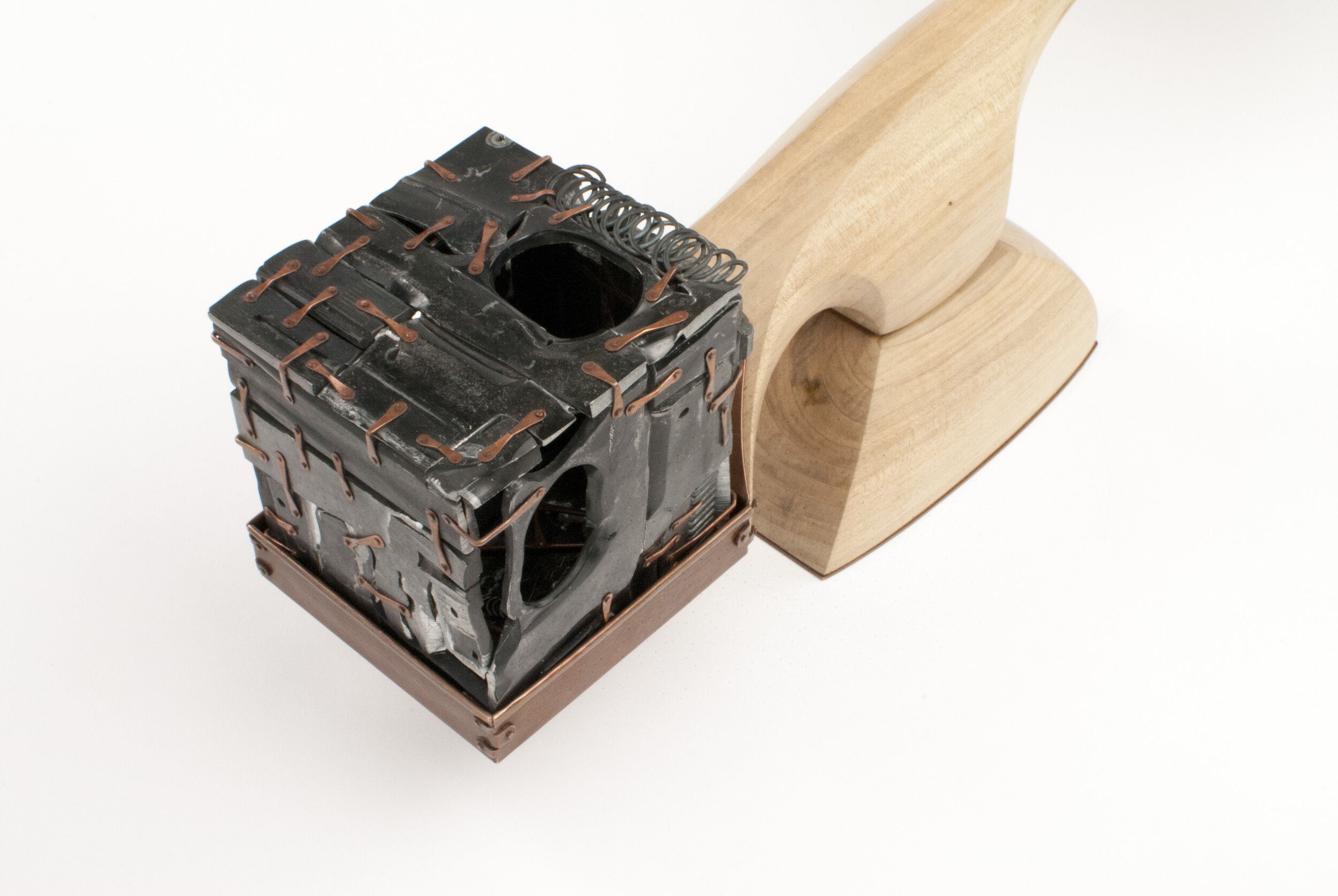

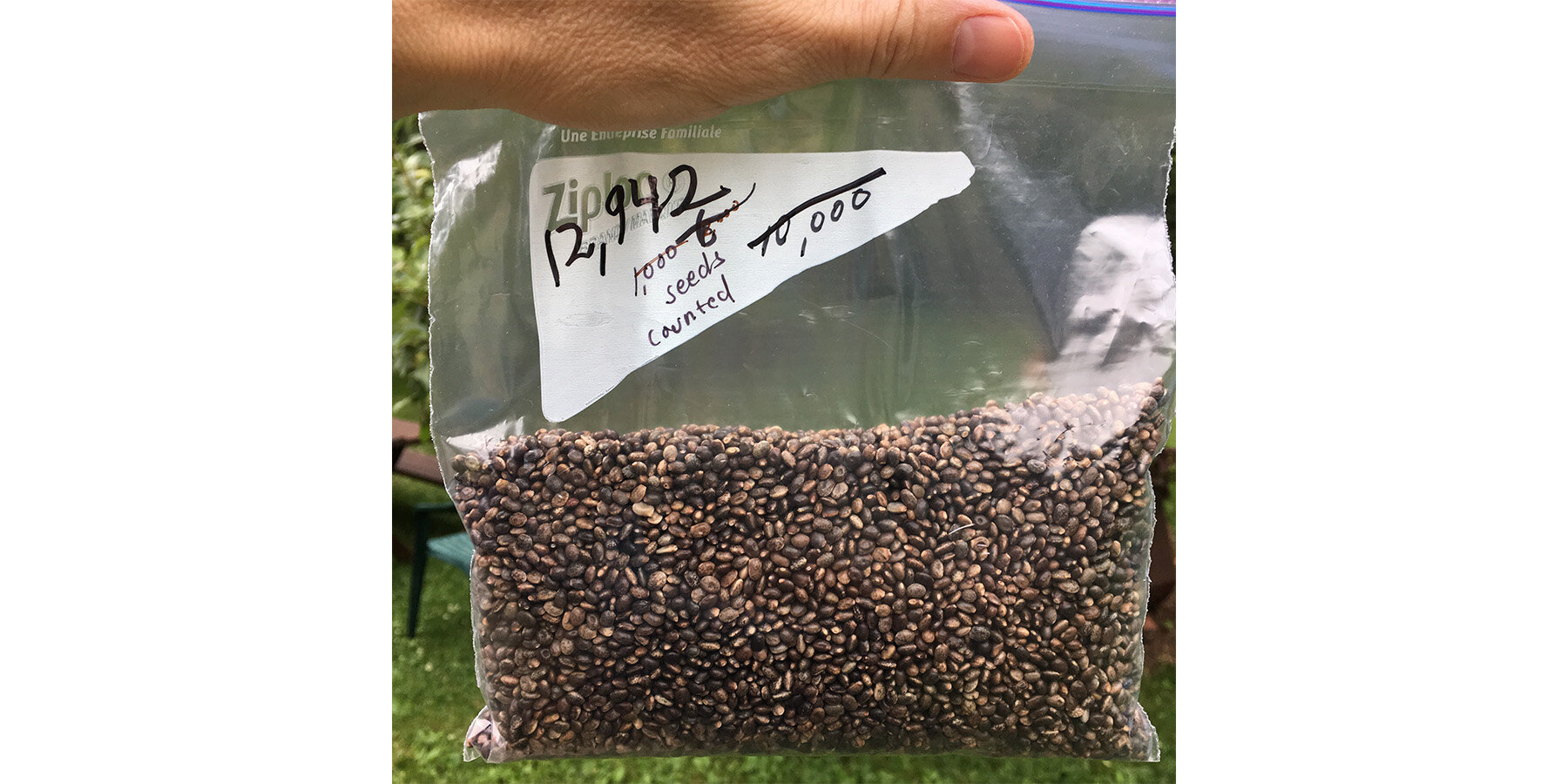

The human cost
My work, the Human Cost, was created for the exhibition I.M.A.G.I.N.E Peace Now. https://imaginepeacenow.org It weighs the metal of one handgun against 12,942 wild perennial lupine seeds. 12,942 because that was the number of people killed with guns in the United States in 2015. 1
I knew it was important for me to count each and every seed in the making of this work, but I didn’t realize how difficult and revealing it would be until I began. At first, noticing the nuance in color and size, I thought about each seed representing an individual. As the number grew the thought of losing so much life and potential was overwhelming. But the most disturbing moment came after hours of counting, when I could no longer hold the sadness of so many deaths. I became aware that I was doing nothing more than moving seeds into piles 5, 10, 15, 20, 25…100…1,000.
I wish that everyone who has a voice in the gun control debate would be required to count, one by one, the lives taken each year. Because it is unacceptable for us to become numb to what those numbers truly represent.
1. Mascia, Jennifer. “15 Statistics that Tell the Story of Gun Violence This Year.” The Trace. https://www.thetrace.org/2015/12/gun-violence-stats-2015/ (accessed June 1, 2016)

AFFECT sterling silver and maple 48 x 16.5 x 4 cm
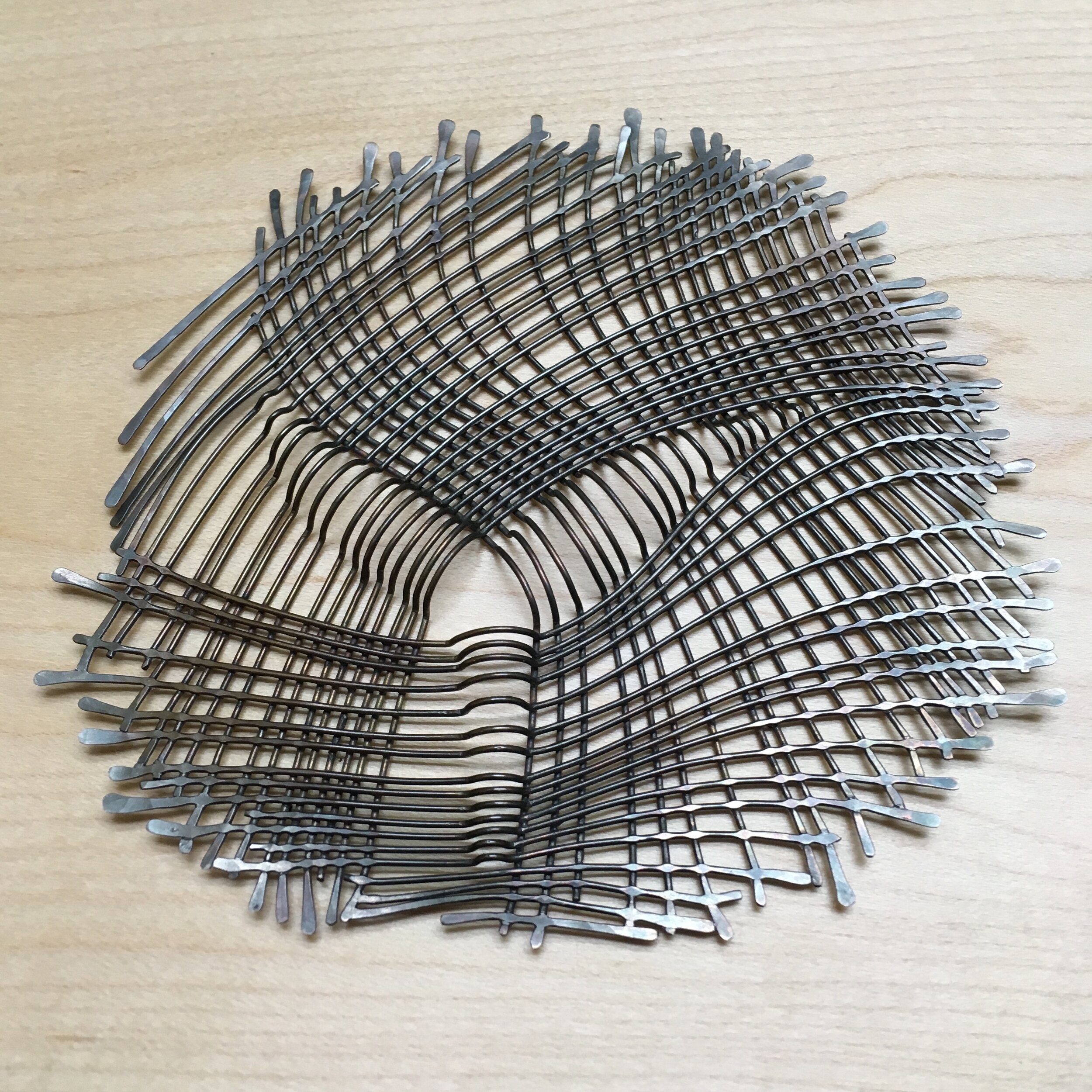
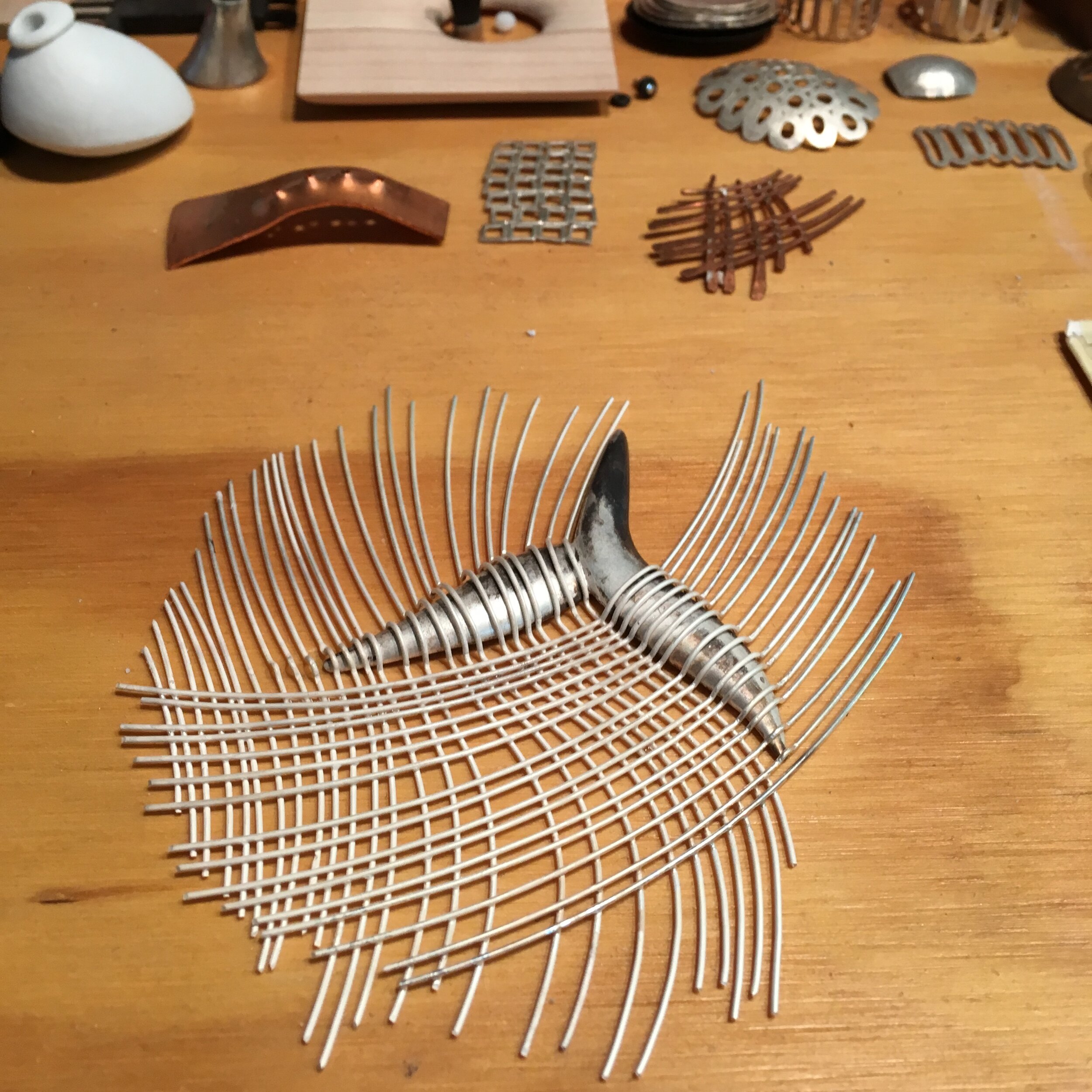
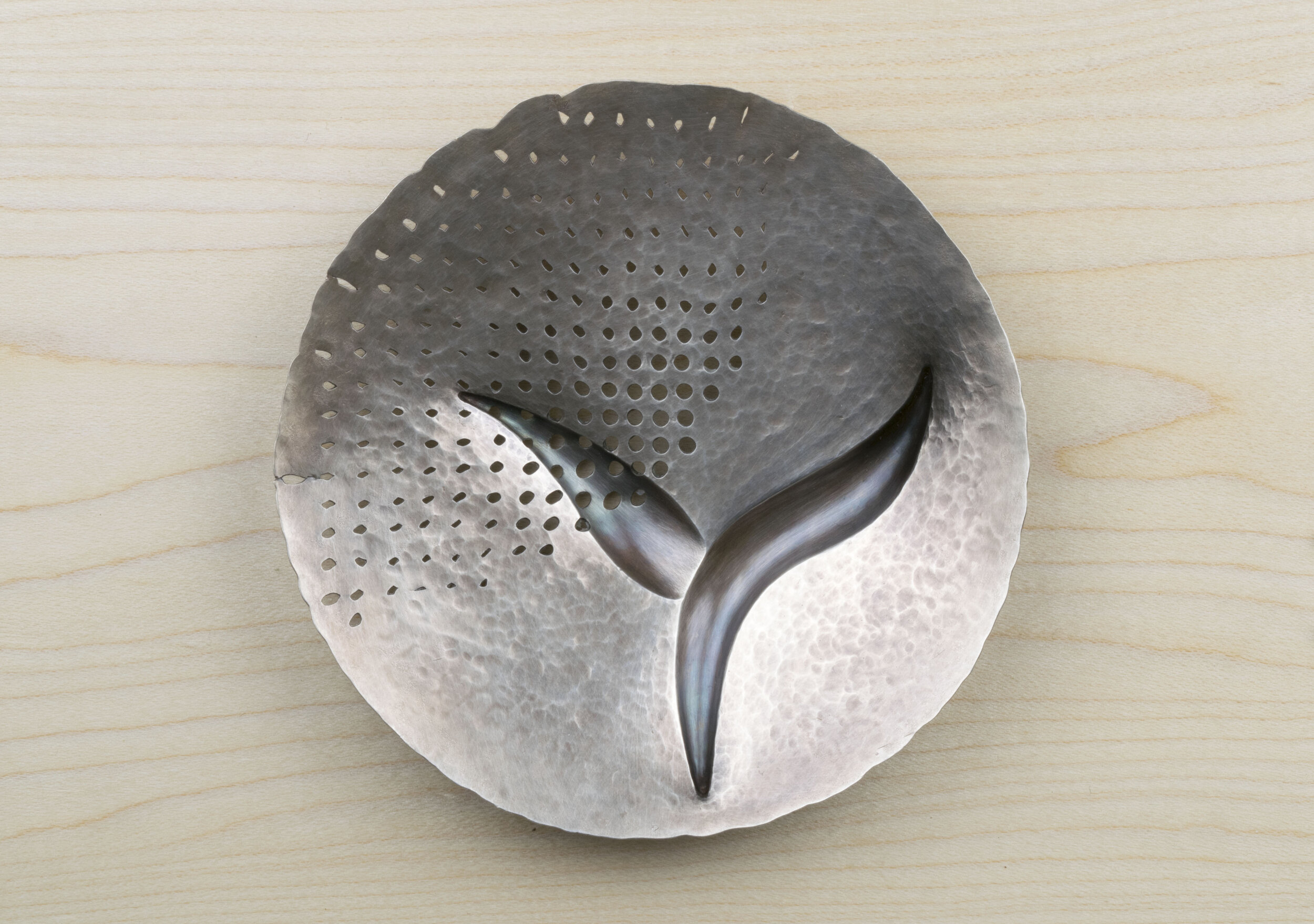
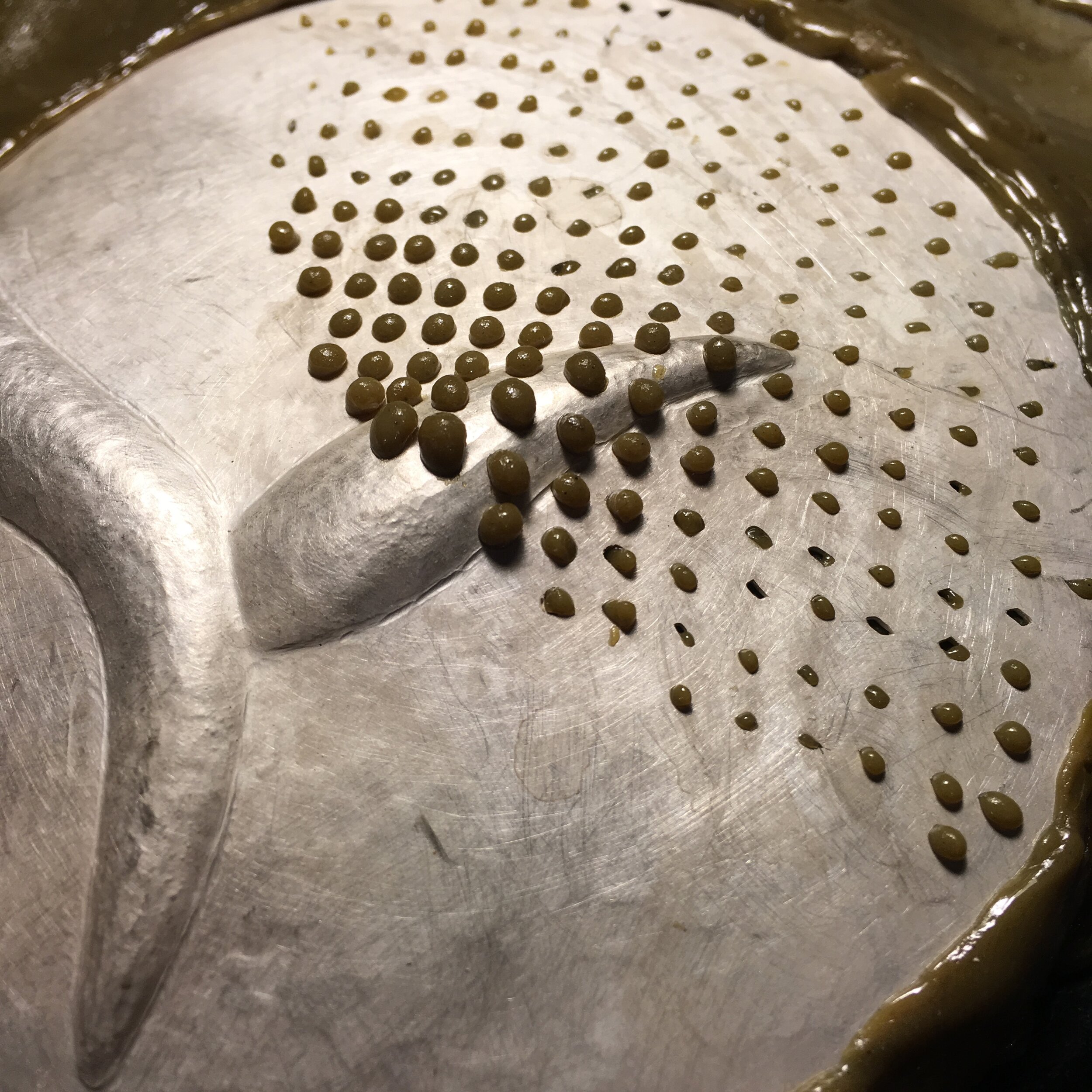
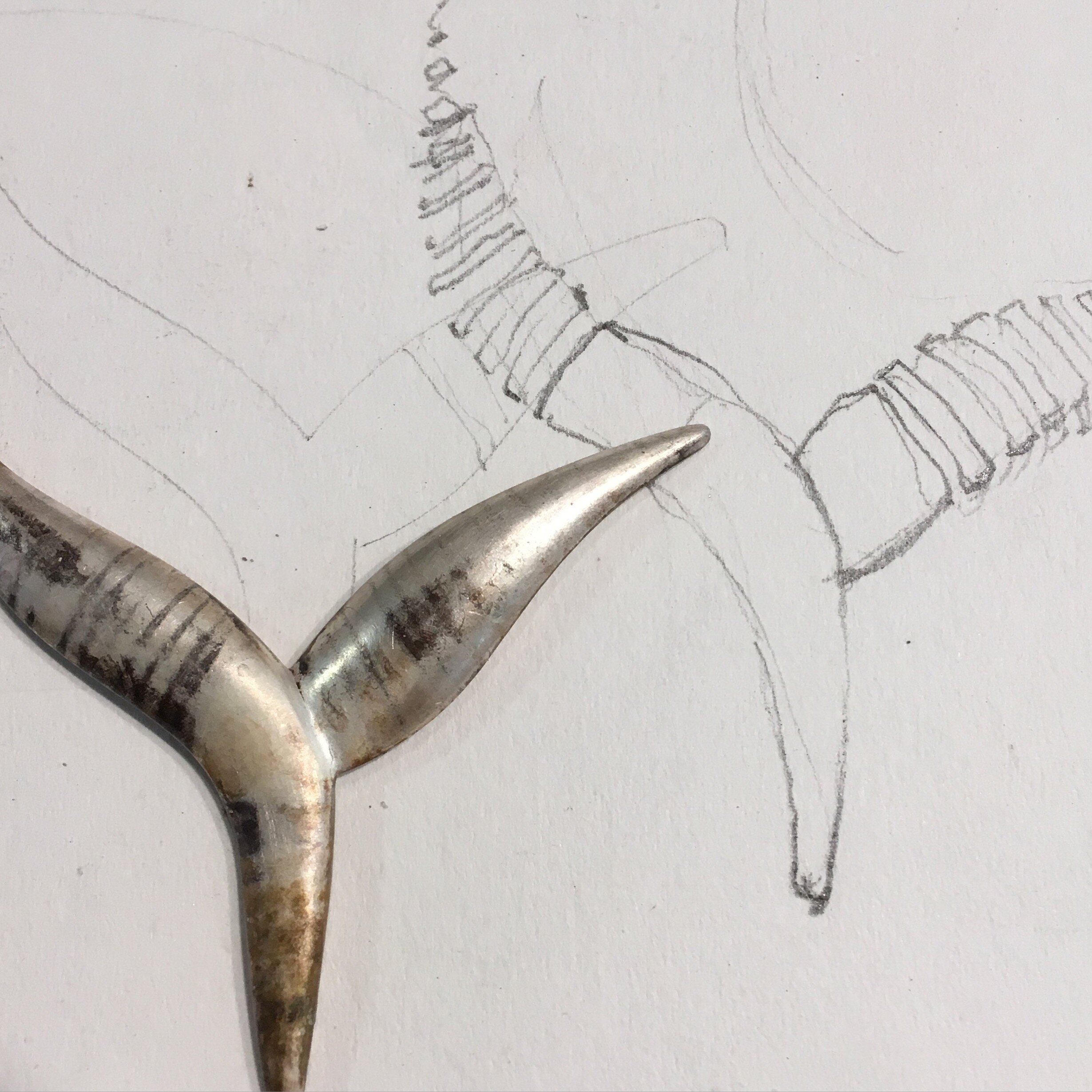

affect
Affect is a collaborative piece made with Sue Amendolara for her exhibition 20/20. Given a cast sterling silver shape with the directive to use it in the creation of a new work, I chose to make a piece that honors teachers and mentors. Two of the three circular components have been transformed by the impression left by the silver shape. The third component, made from the original cast element, has been cut apart and extended to become a continuous circle. Giving knowledge inevitably leaves spaces but those spaces in turn initiate growth and change.
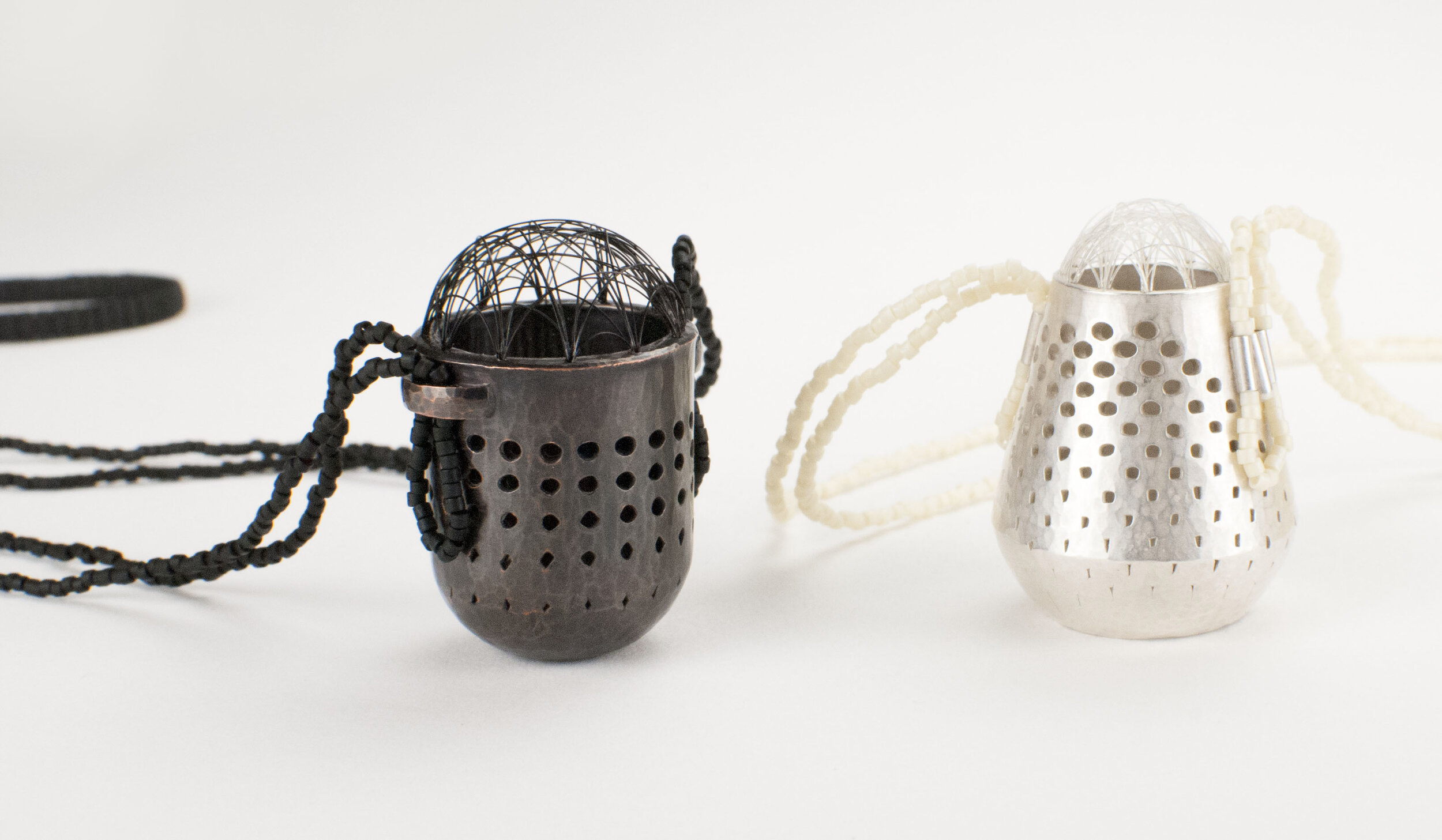
OTHER sterling silver, copper, horse hair, glass beads, linen and thread 69 x 20 x 5 cm
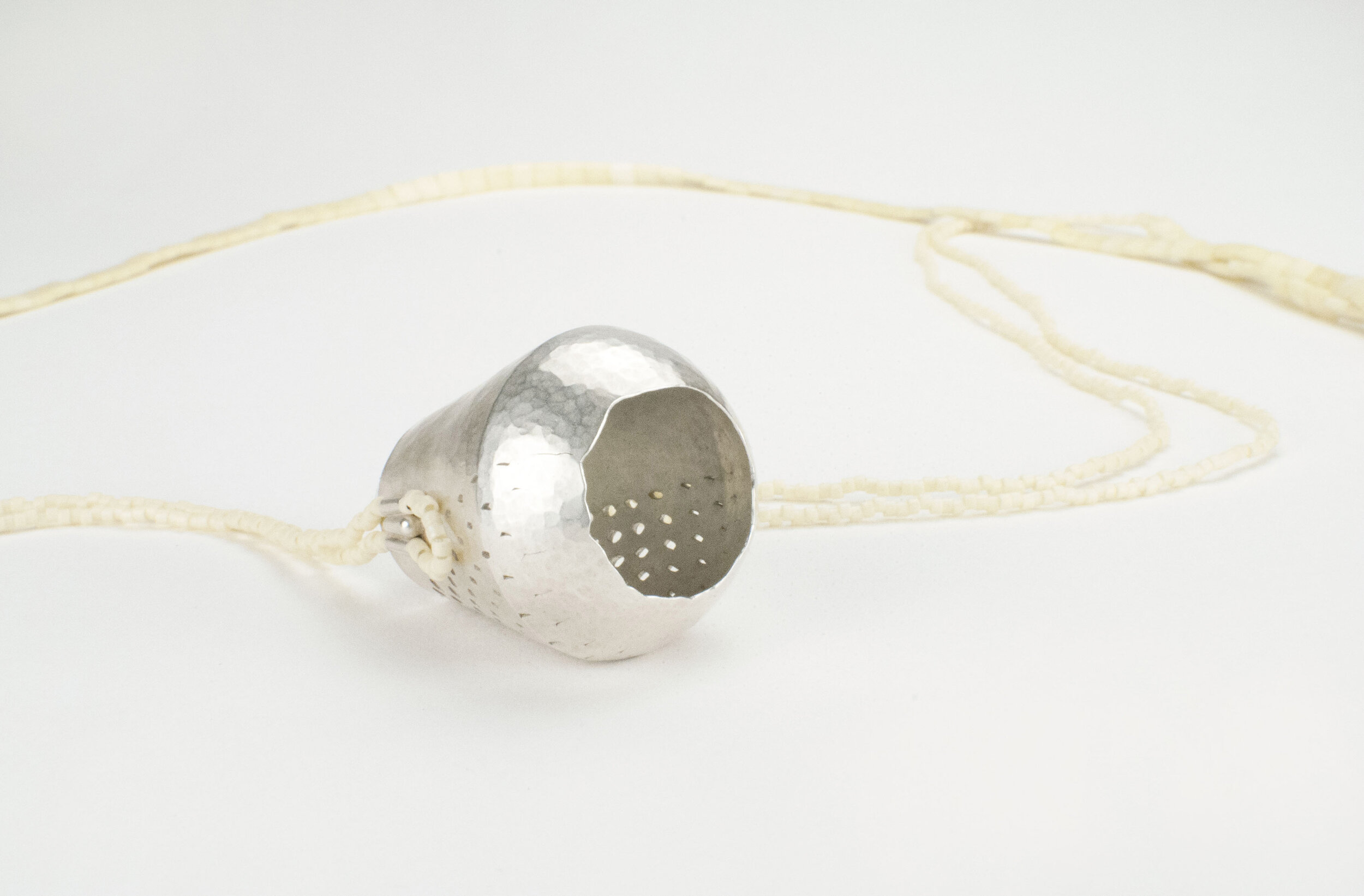
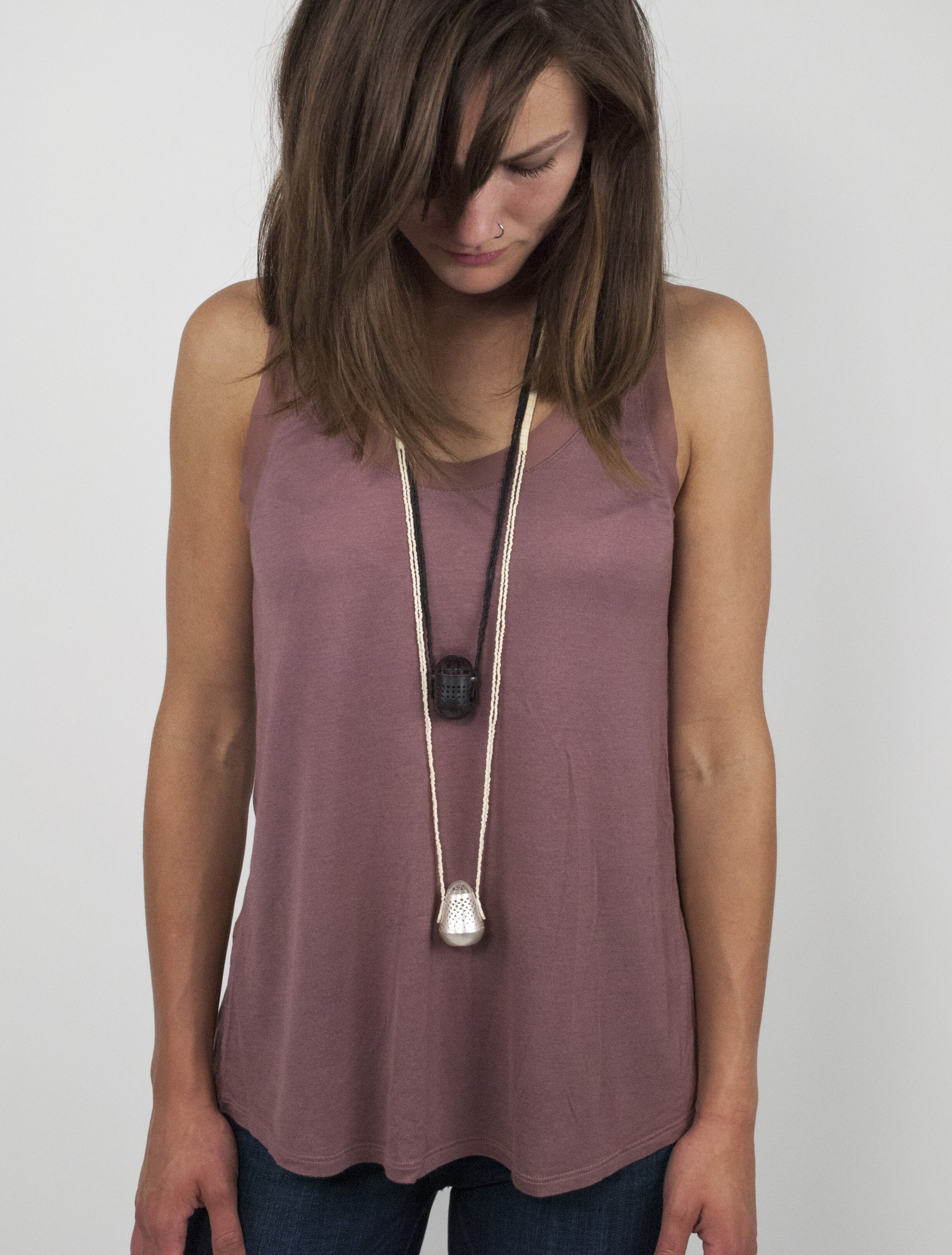


Other
Today, in our culture and the media, our differences are emphasized far more than our similarities. This creates a divide that often feels insurmountable and disregards our connections and commonalities. My intent is that these two necklaces will be worn together. Initially distinguished by their polarities, closer observation reveals that they actually share the same visual language of holding and letting go, effort and acceptance.
I felt these necklaces were complete in spring 2016. But more recently I came to understand that acknowledging common human experience is not enough to bridge the chasm that characterizes otherness. It requires more care, intention and effort. And so I began to stitch while thinking about connecting, mending and honoring what we share. By the time black and white had incrementally become something in between, the thread built into a scar-like mass, a visual record of healing.

ROOT wood and paper 53 x 15 x 15 cm
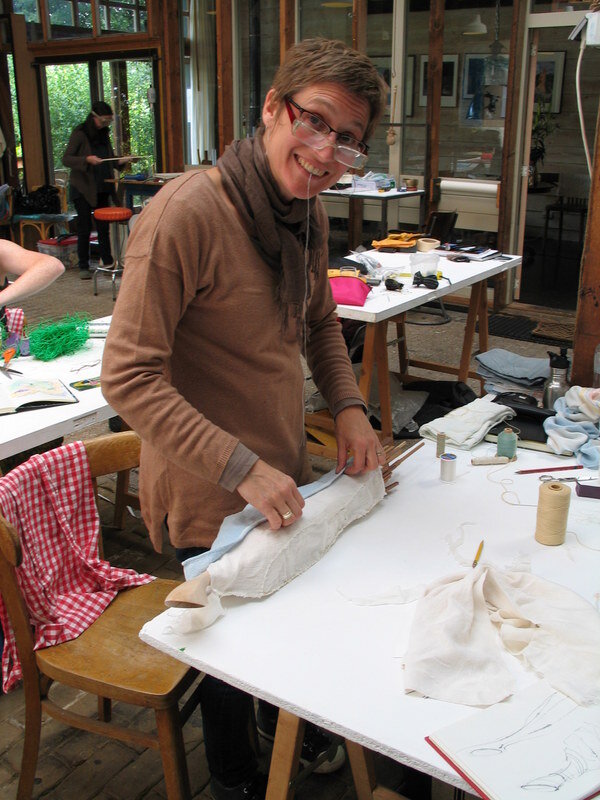
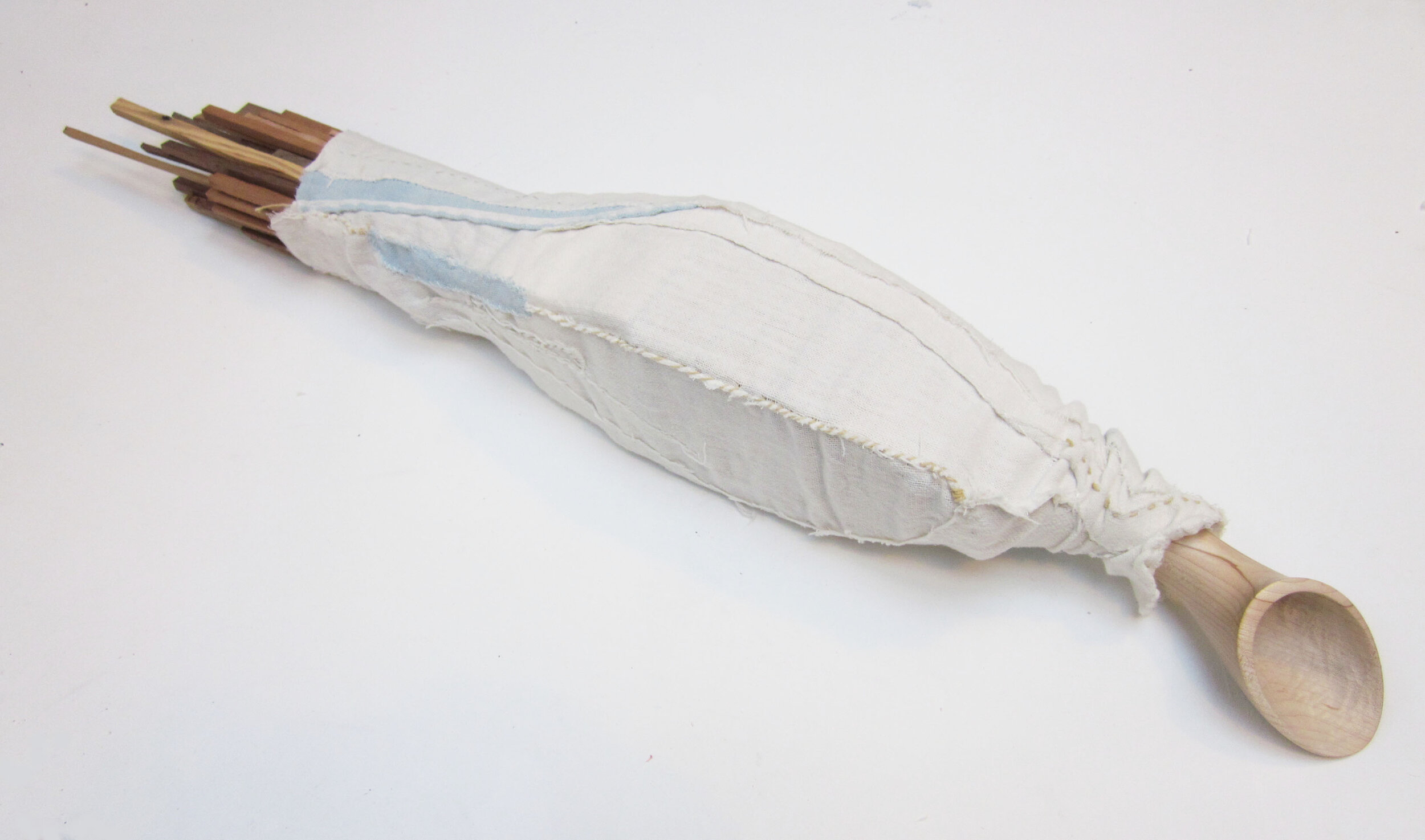
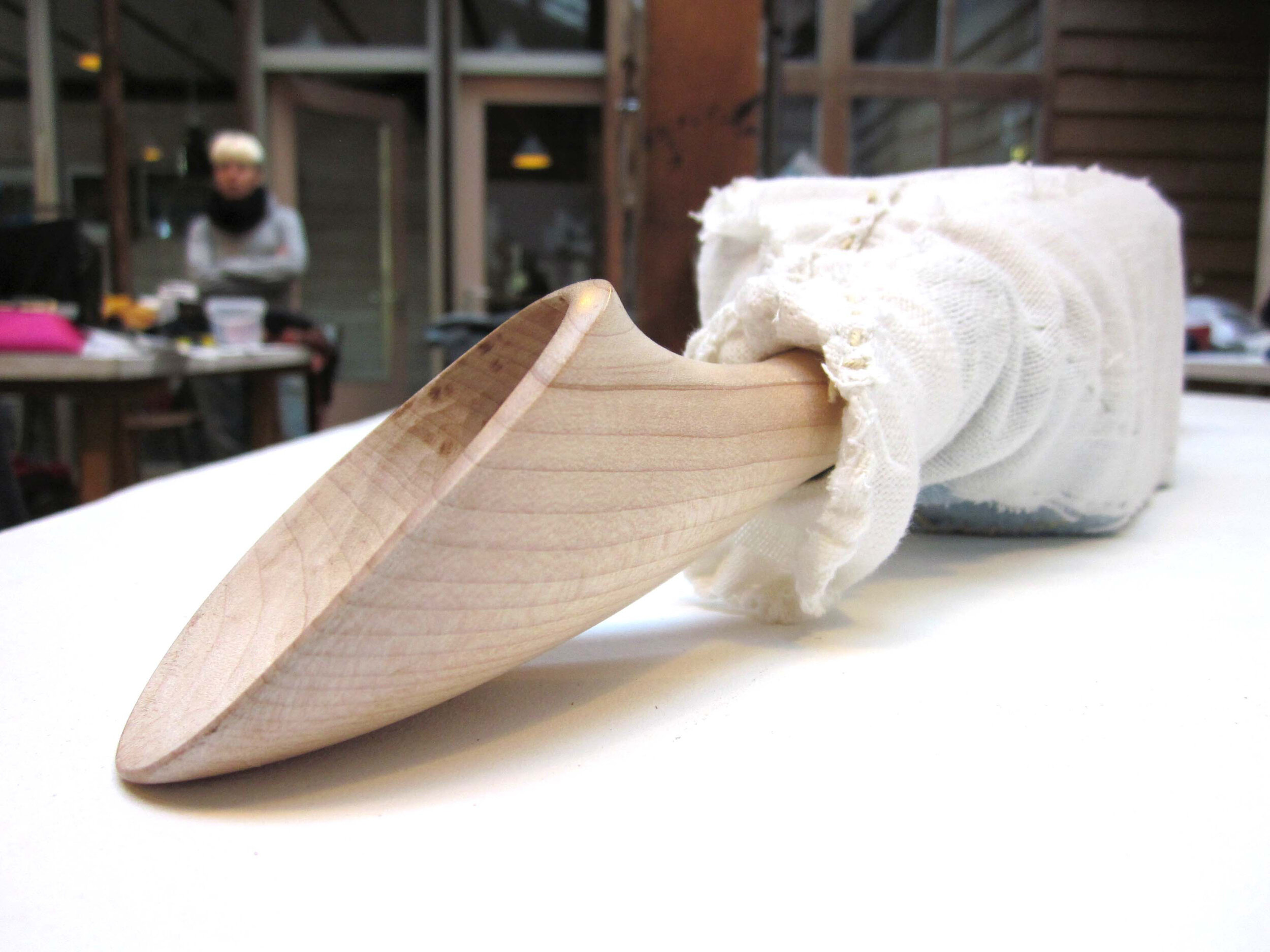
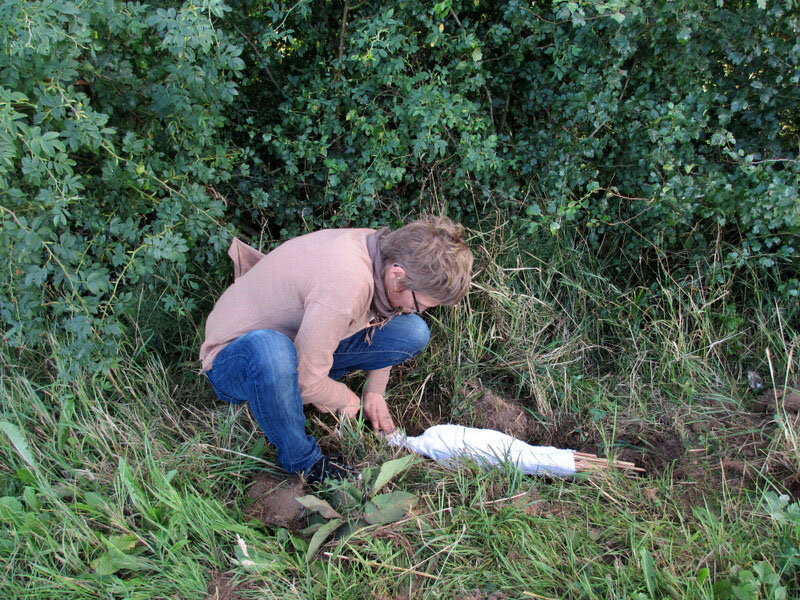
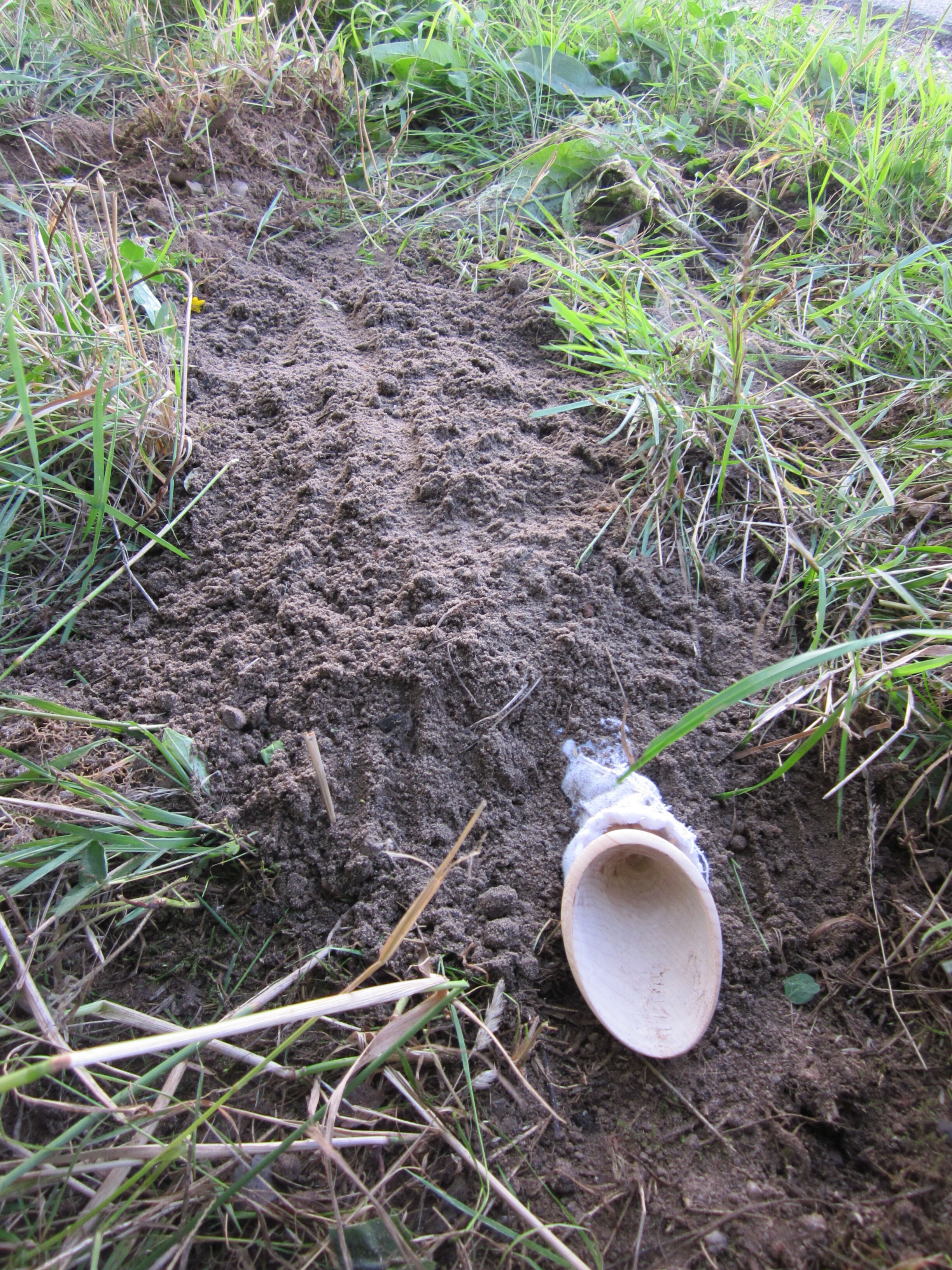

ROOT
In the summer of 2013, I traveled to the Netherlands to take a course called Now Roots with Dutch jeweler, Ruudt Peters. In preparation for the workshop we were given an assignment to make a three dimensional representation of our roots. This is mine. Made of wood and paper it is about how everything in my life begins with people. What I learn from them defines me. Wrapped around those roots are the experiences and influences that build to make me solidly who I am. The end opens to become a bowl…a vessel that both gives and receives.
On the second day of the workshop we were asked to make a house for our roots. I knew immediately that I wanted to sew mine a kind of sweater from old baby blankets that I had brought from home. I don’t know why, but the moment I finished the last stich, I knew that I was going to be asked to let it go. As I buried my root on a roadside in the Netherlands, I felt like I was being asked to do something extraordinary and unreasonable. But I had taken the workshop to let go of the past and to relinquish the obligation I felt toward my definition of myself as a maker. I understood that burying the root didn’t diminish its value in any way. The relevance had been in the making of it and I was ready to move forward.